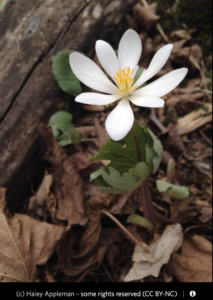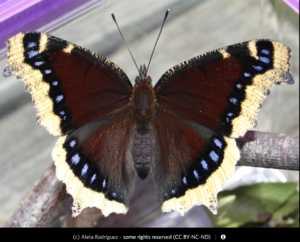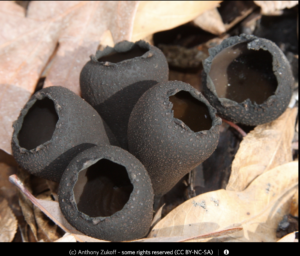DABB Data Bytes
Welcome back! I hope the week has gone well for you all so far! Last week, I encouraged you all to get outside and make your own observations on iNaturalist. I have noticed that there have been a lot of different fungi popping up everywhere. Fungi can be difficult to see if you aren’t actively looking for them, but nonetheless, they are everywhere!
This week, my plan is to continue to list the most recent observations of species in the Driftless Area from our iNaturalist page.
One of the recent observations was of Bloodroot (Sanguinaria canadensis). In the Driftless Area, it has been observed 198 times and 10 times in the La Crosse County area. It was most recently observed on April 23 in Prairie du Sac, Wisconsin. Bloodroot is a perennial, herbaceous flowering plant that is native to eastern North America.

Some other names it goes by include Canada puccoon, bloodwort, redroot, red puccoon, and black paste. The juice of Bloodroot is red and highly poisonous which can lead to permanent scarring of skin tissue. The seeds of this plant are spread by ants which is a process called myrmecochory. Fun fact: this species produces pollen but no nectar.
Another recent observation was of Mourning Cloak (Nymphalis antiopa). It was last observed on April 23 in Carroll County, Illinois. It has been observed 37 times in the Driftless Area and one time in La Crosse County. Mourning Cloak is a species of butterfly that is native to Eurasia and North America. These butterflies have a lifespan of 11-12 months which is one of the longest lifespans of any butterfly! They are also known for their caterpillar stage when they are especially spiny. Mourning Cloaks are excellent fliers so sometimes they are found in areas far from their usual range during migration. Fun fact: this species will “play dead” in order to escape predation!
Mourning Cloak is a species of butterfly that is native to Eurasia and North America. These butterflies have a lifespan of 11-12 months which is one of the longest lifespans of any butterfly! They are also known for their caterpillar stage when they are especially spiny. Mourning Cloaks are excellent fliers so sometimes they are found in areas far from their usual range during migration. Fun fact: this species will “play dead” in order to escape predation!
The Devil’s Urn (Urnula craterium) was last observed on April 23 in Dane County, Wisconsin.  In the Driftless Area, it has been observed 26 times and twice in La Crosse County. The Devil’s Urn is a species of cup fungi that is often parasitic on oak and other hardwood trees. It is native to North America, Europe, and Asia. In many field guides, this species is listed as inedible due to its rough texture.
In the Driftless Area, it has been observed 26 times and twice in La Crosse County. The Devil’s Urn is a species of cup fungi that is often parasitic on oak and other hardwood trees. It is native to North America, Europe, and Asia. In many field guides, this species is listed as inedible due to its rough texture.
Here’s a reminder to join our Nature Challenge on iNaturalist! The person who makes the most observations or identifies the most species will win a $50 prize! Second place winners get a $25 prize. The challenge ends on September 30, 2022, so be sure to sign up soon! See you next week!
Morgan J